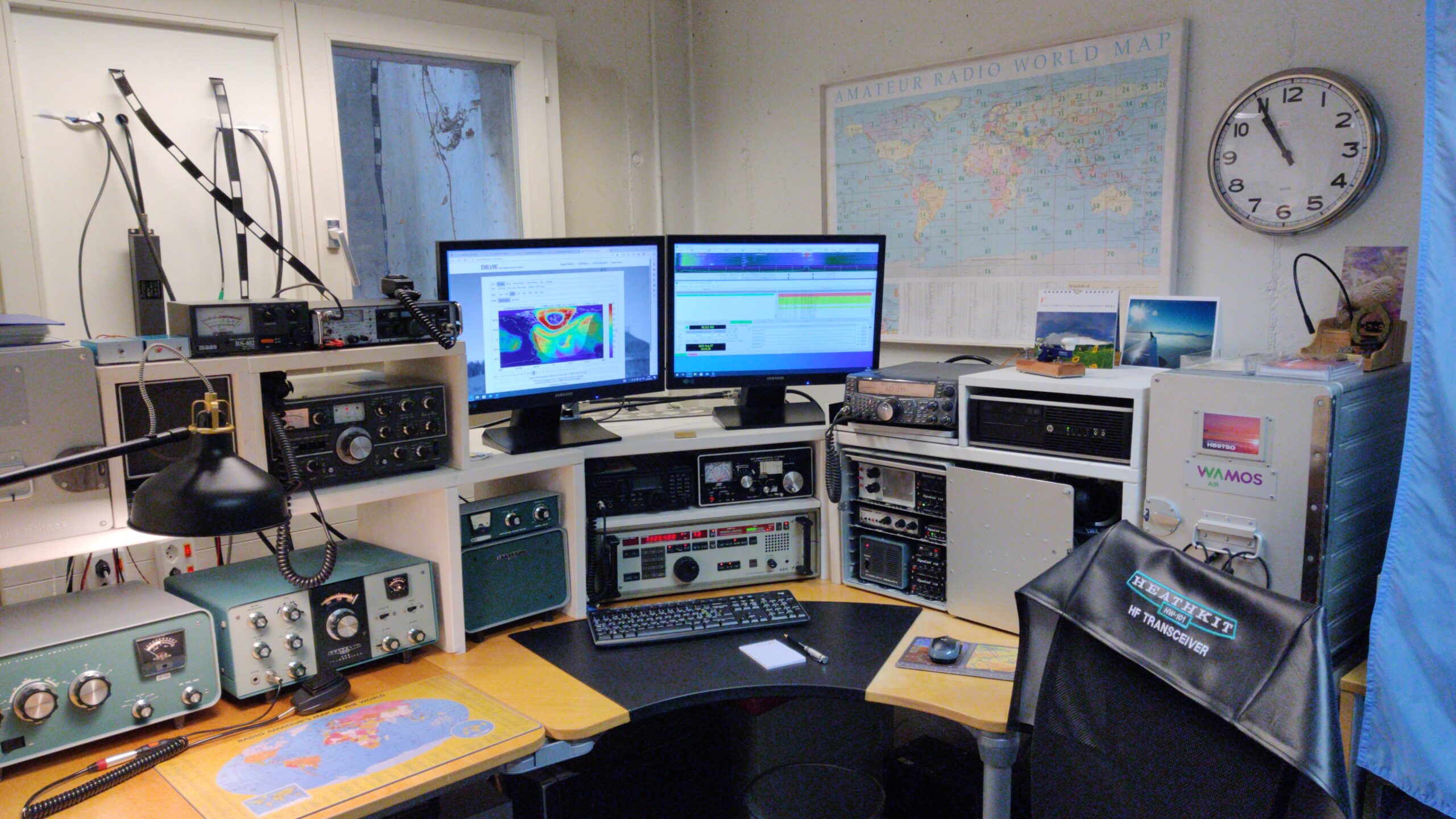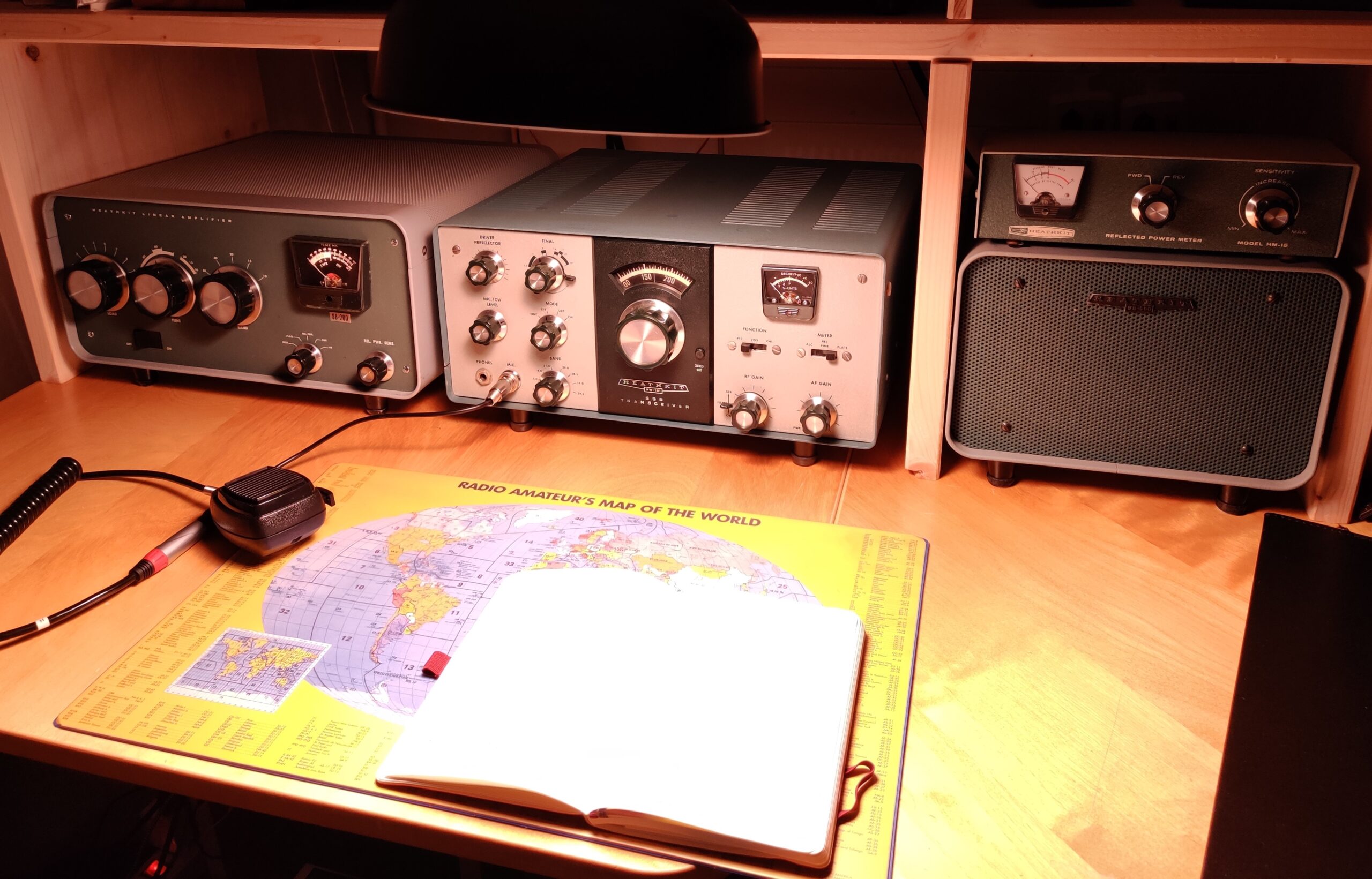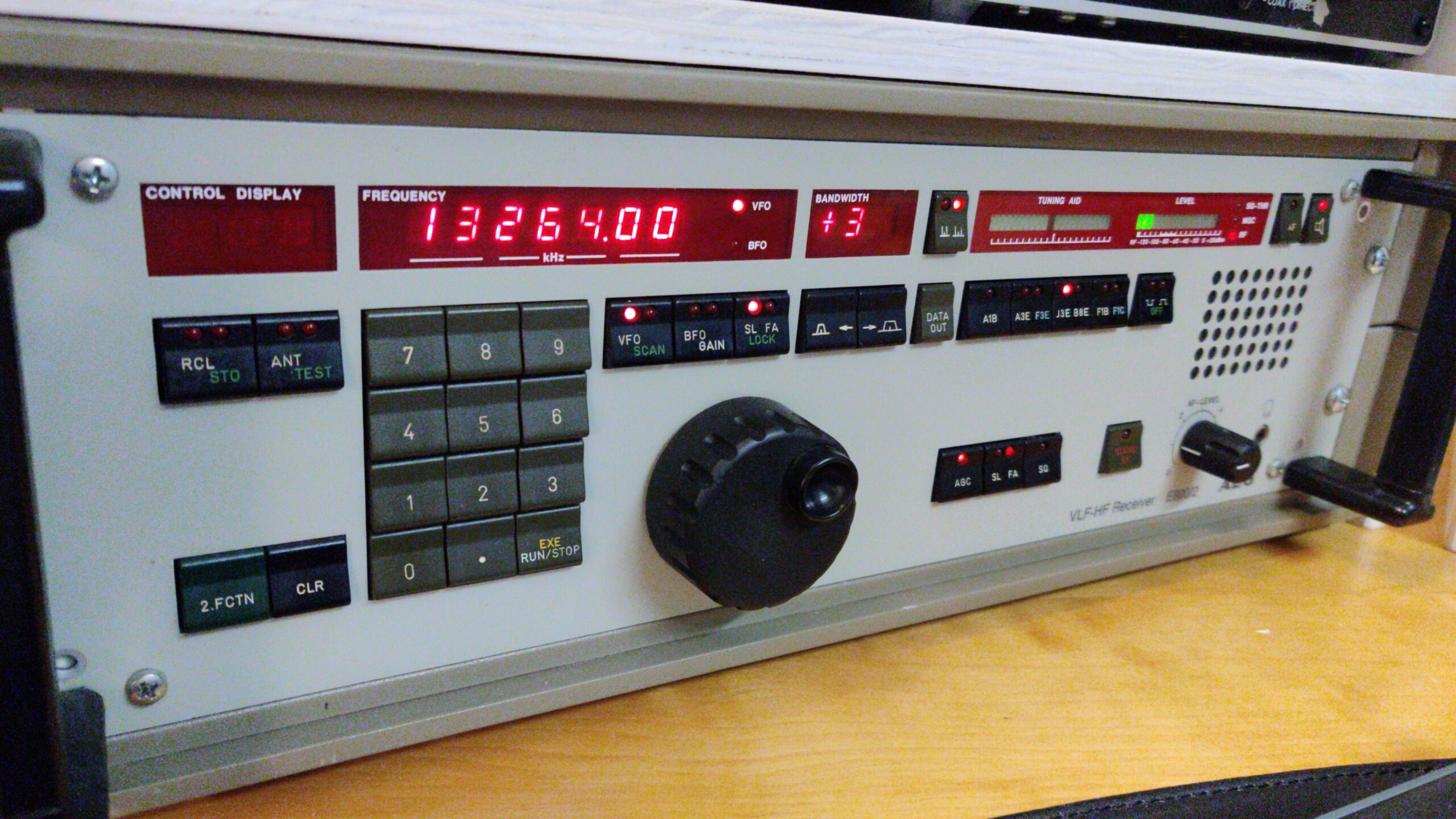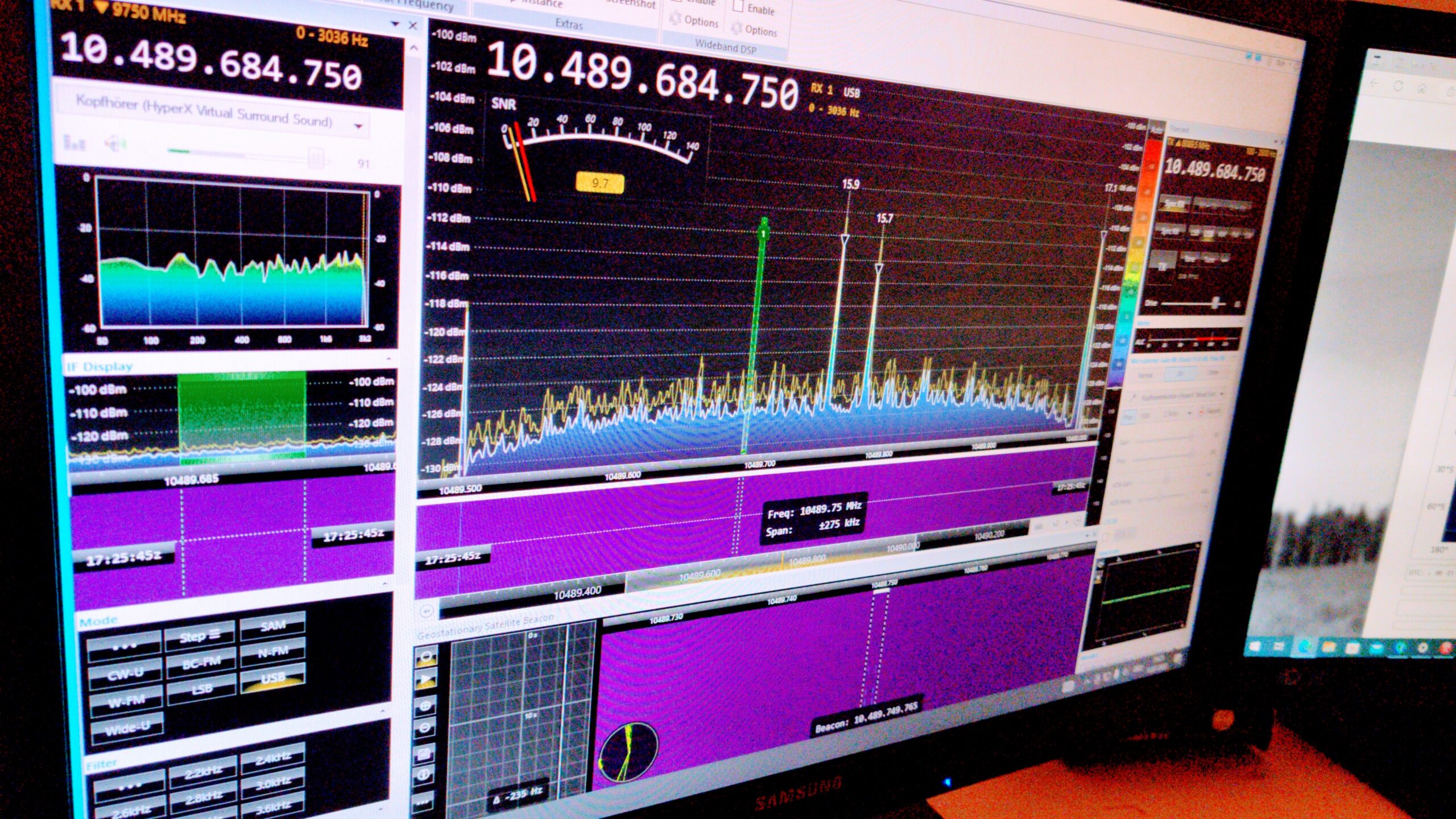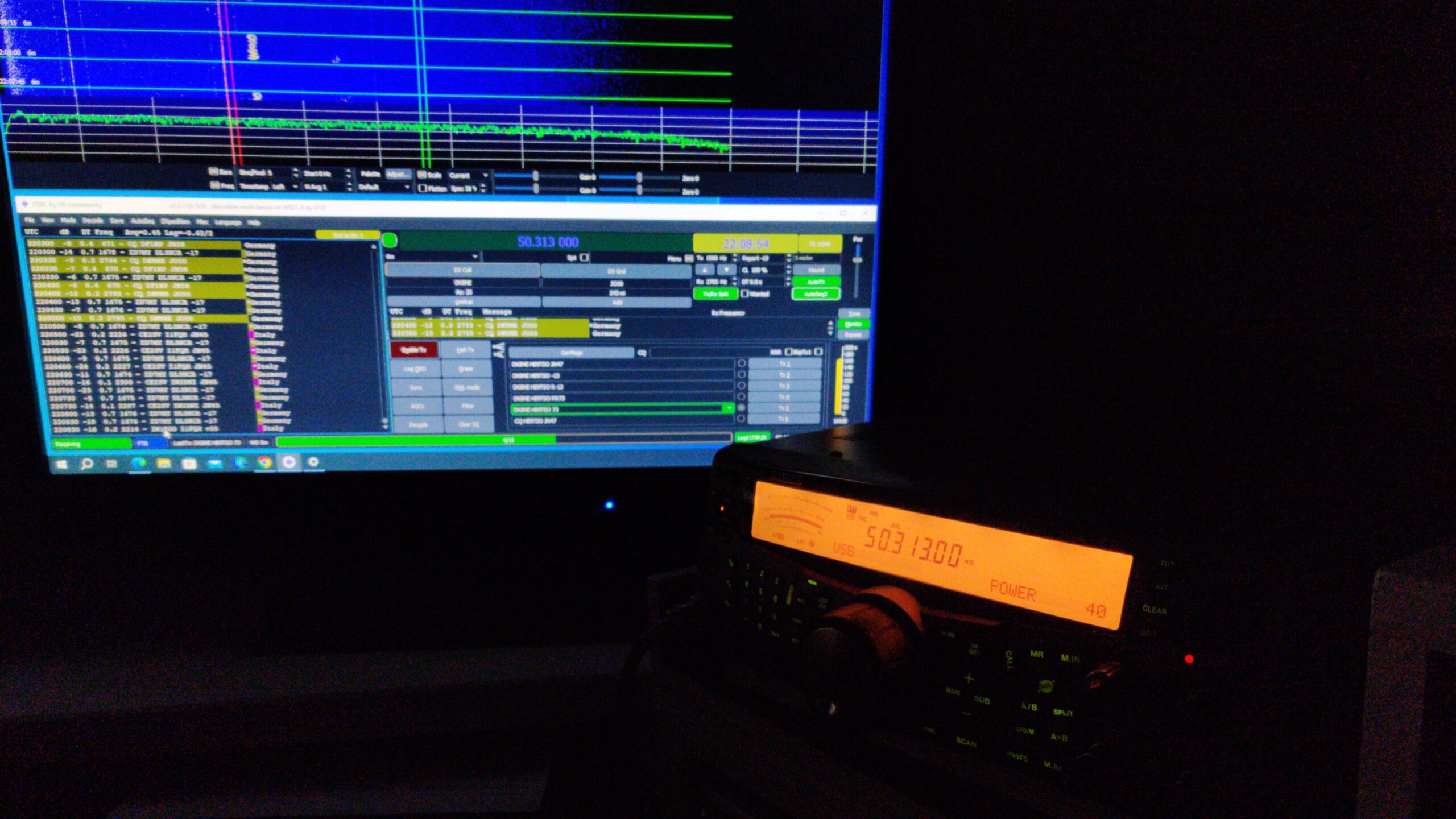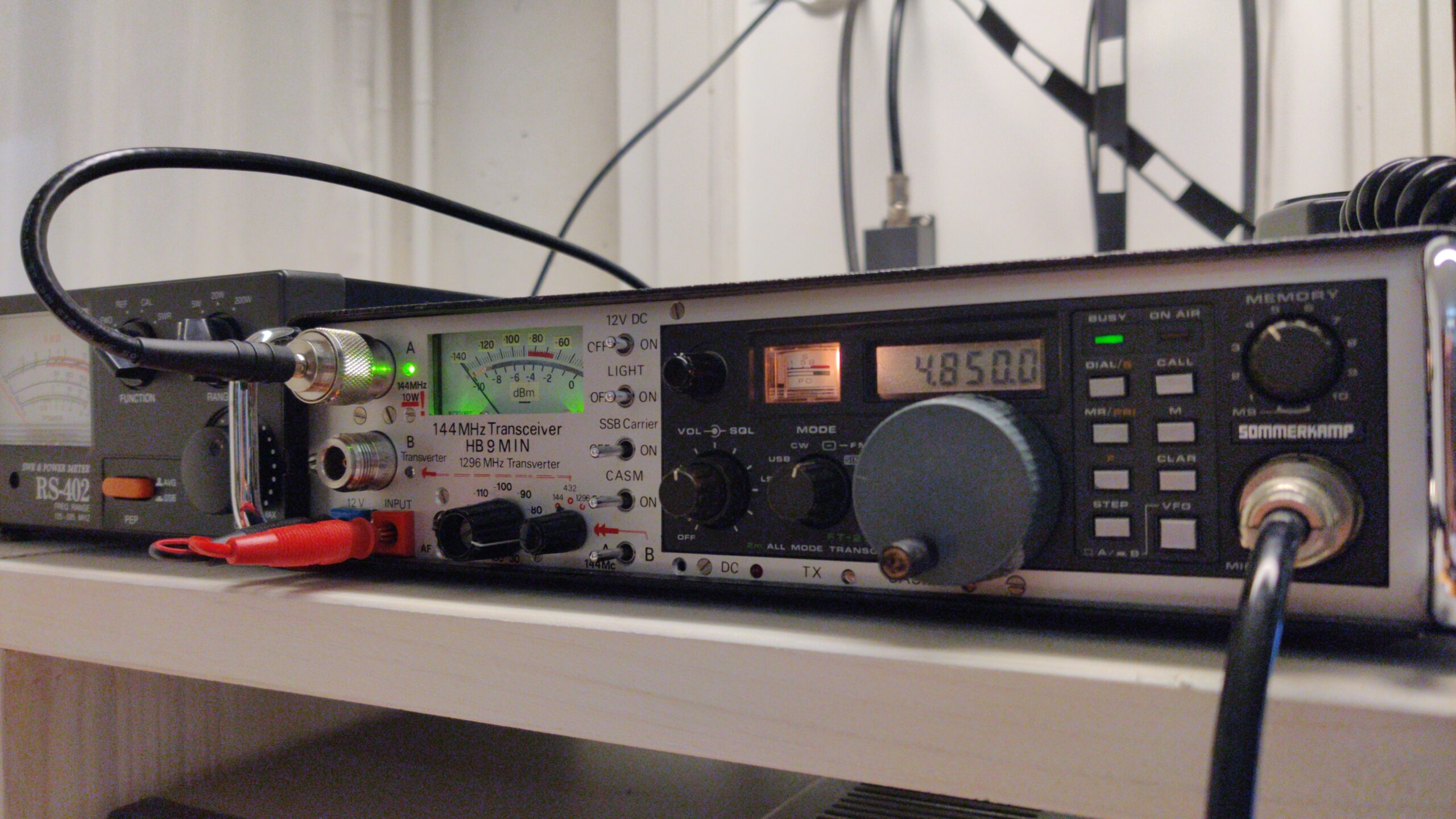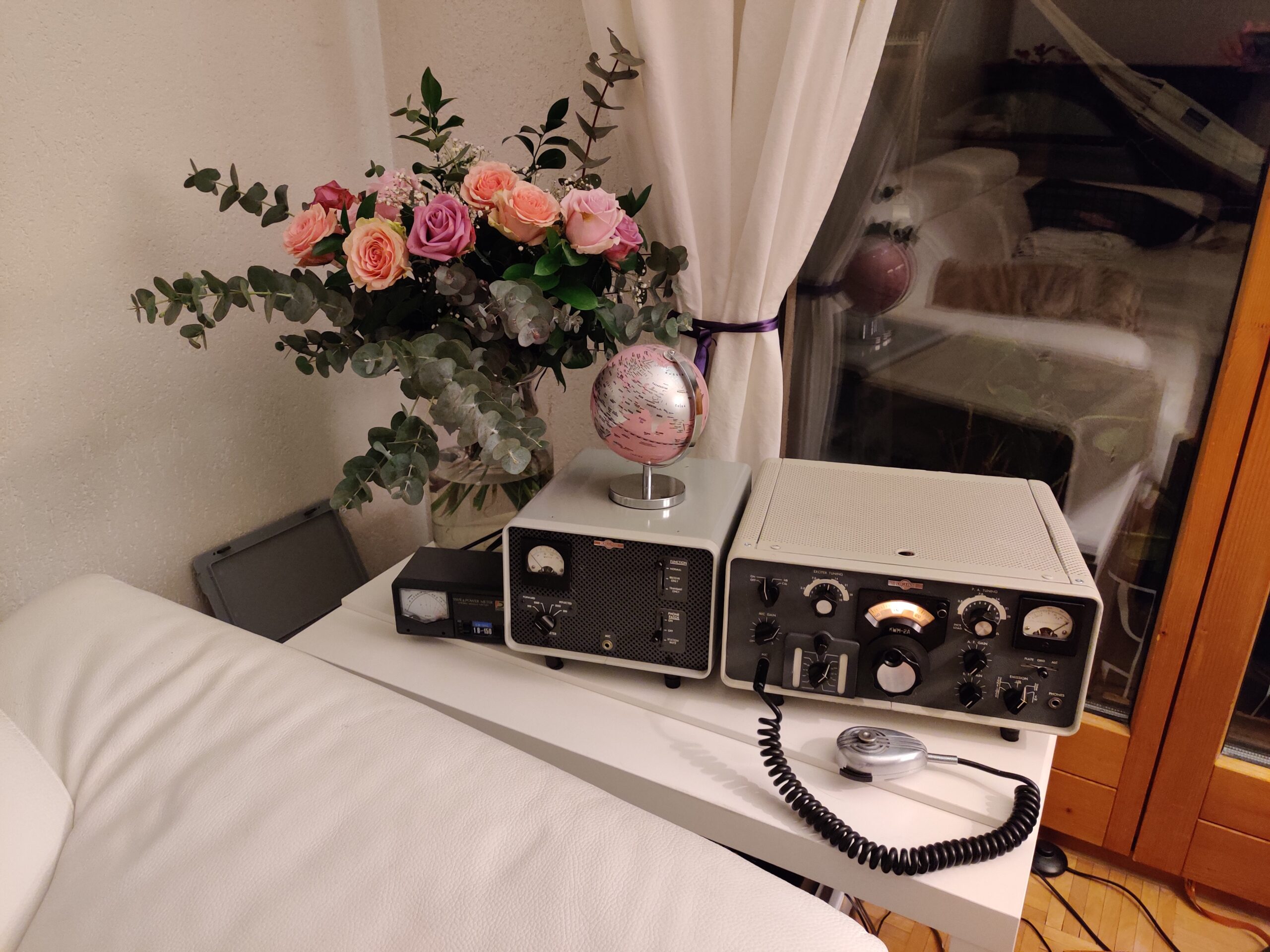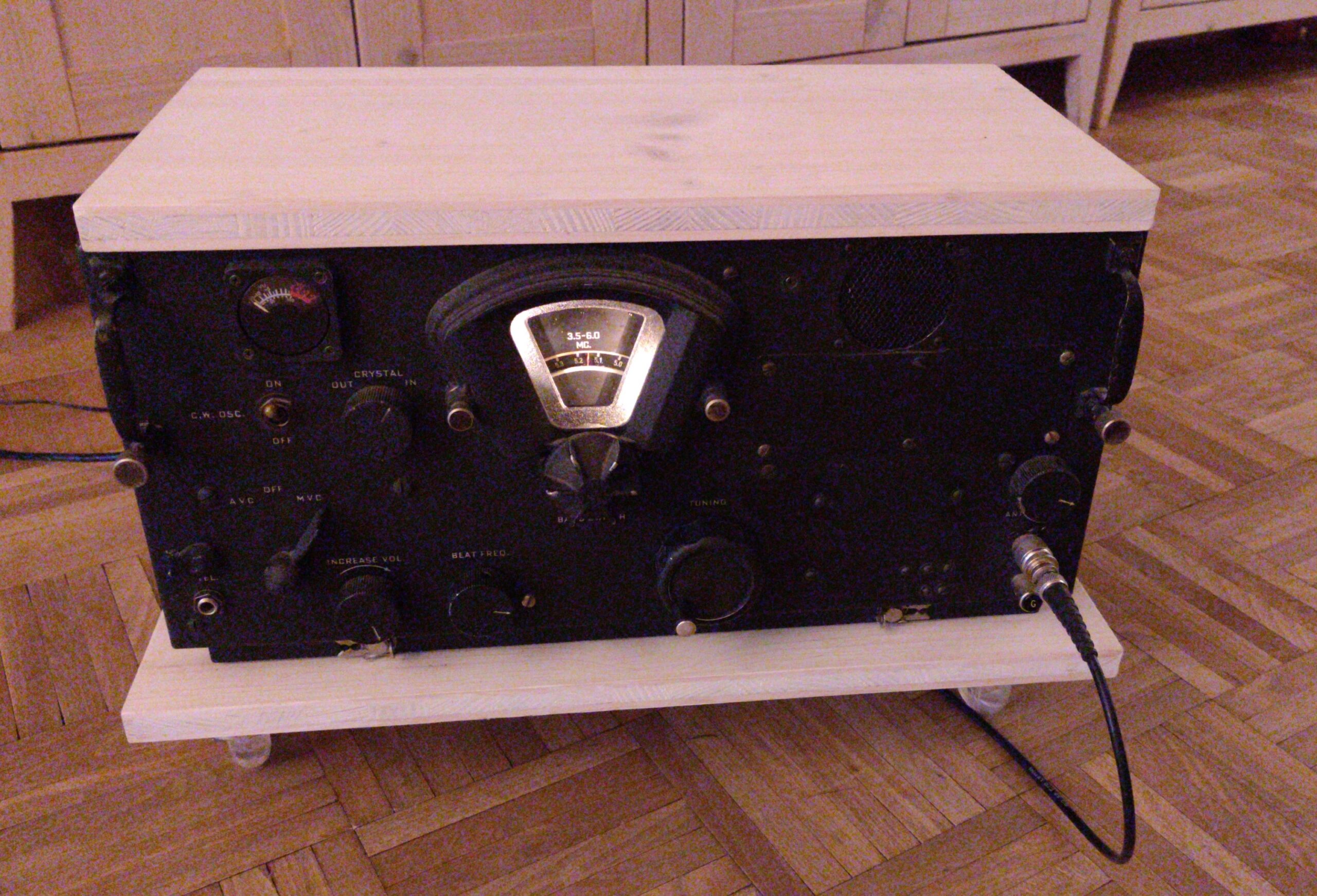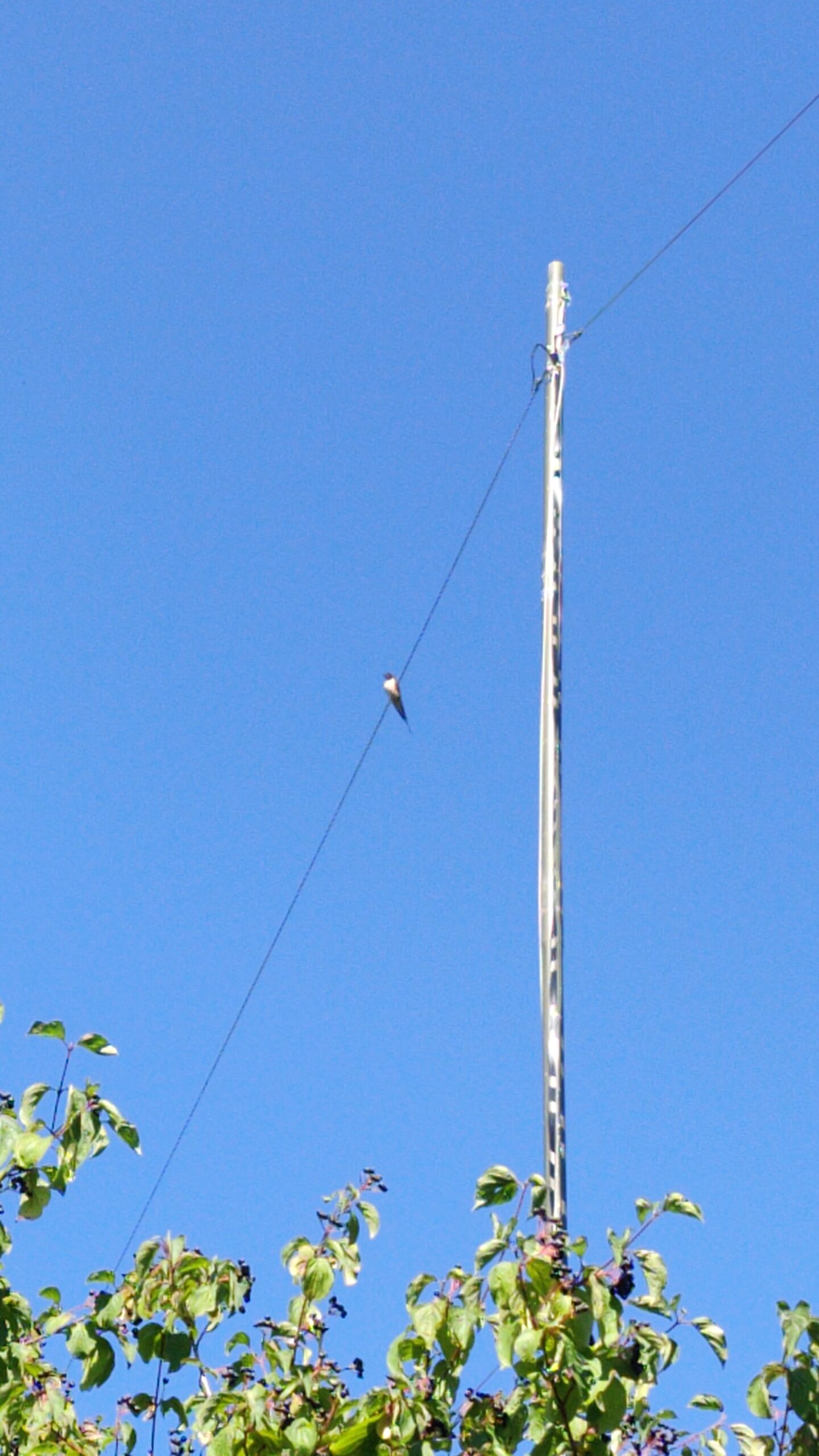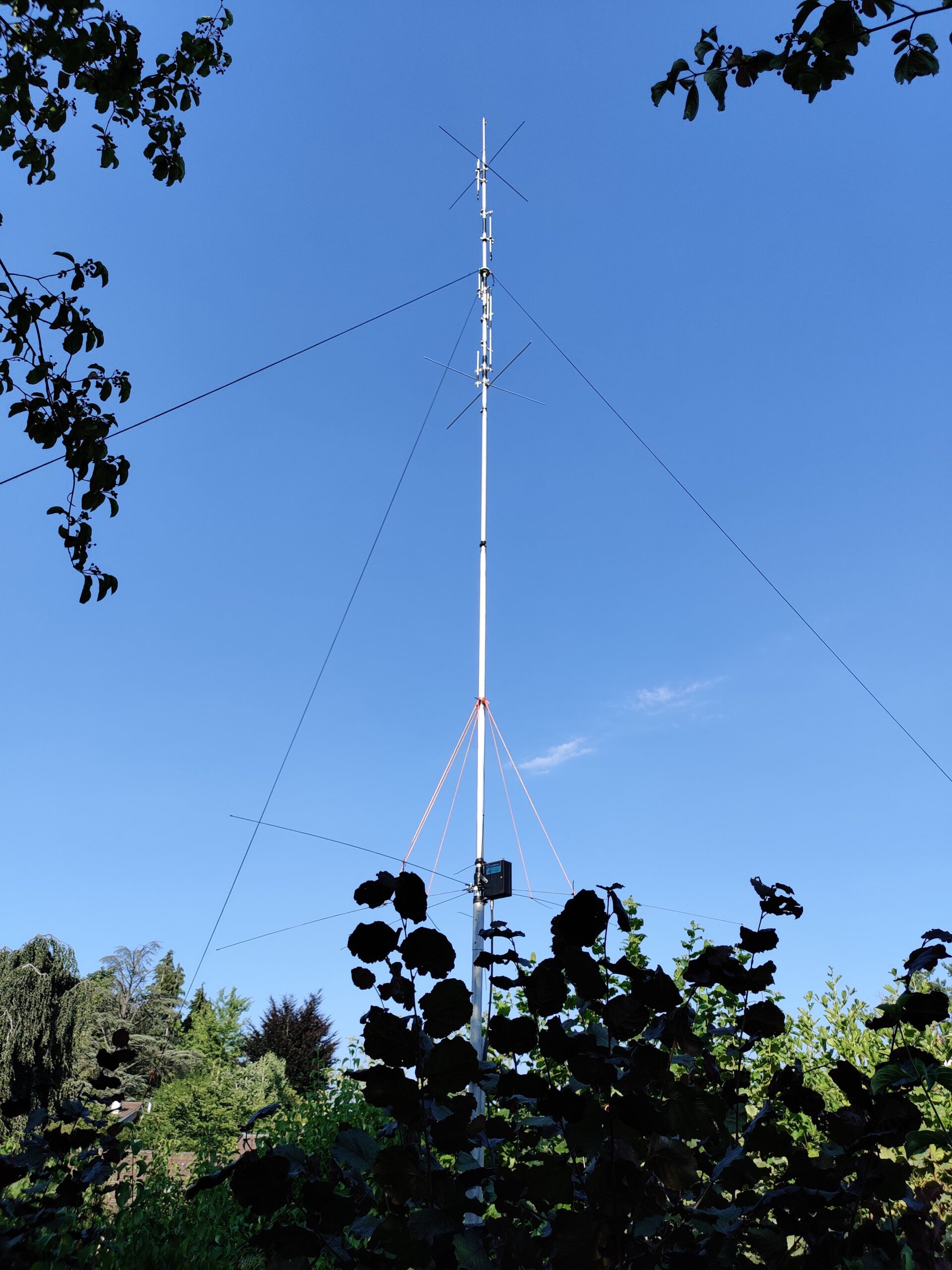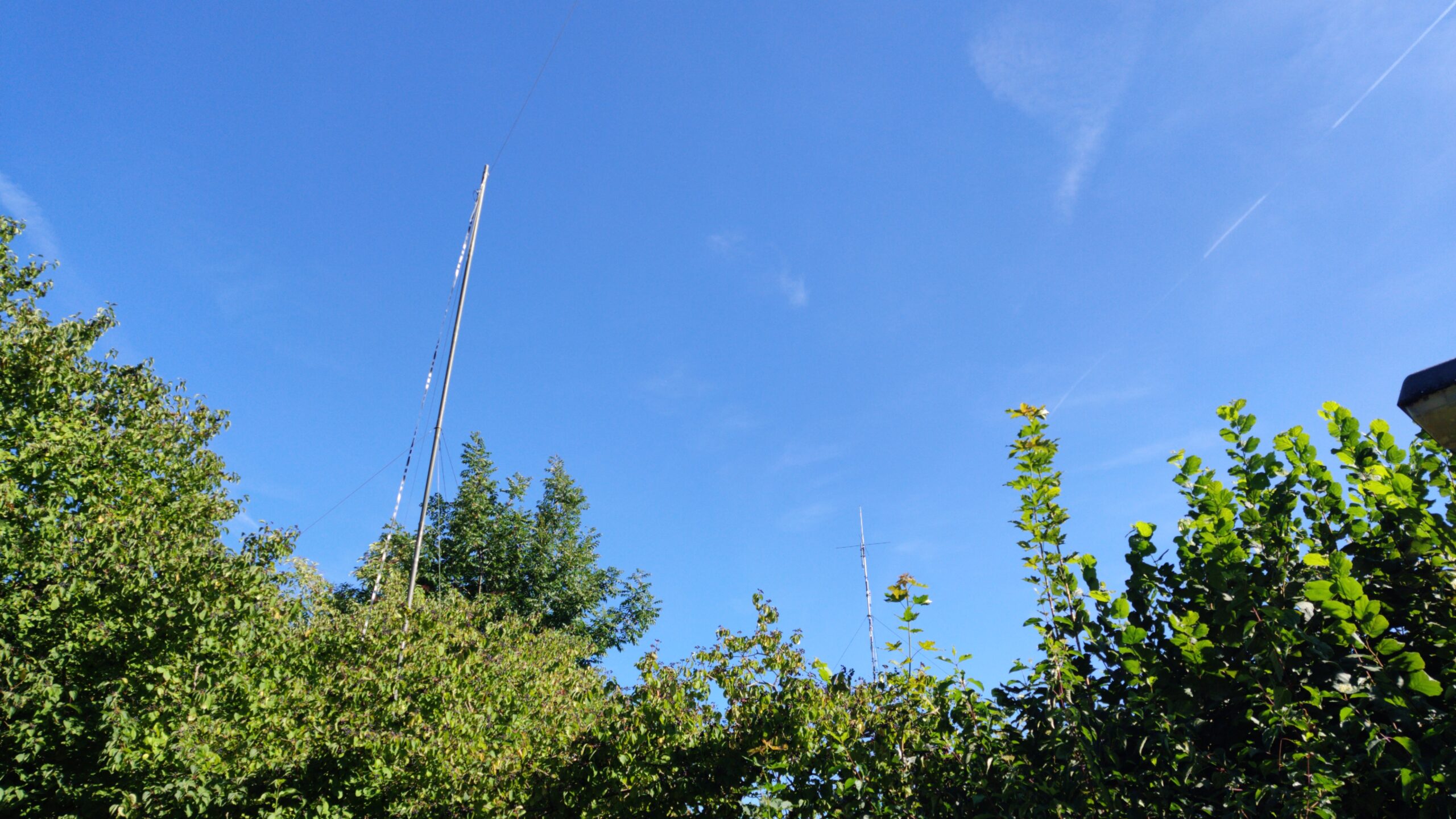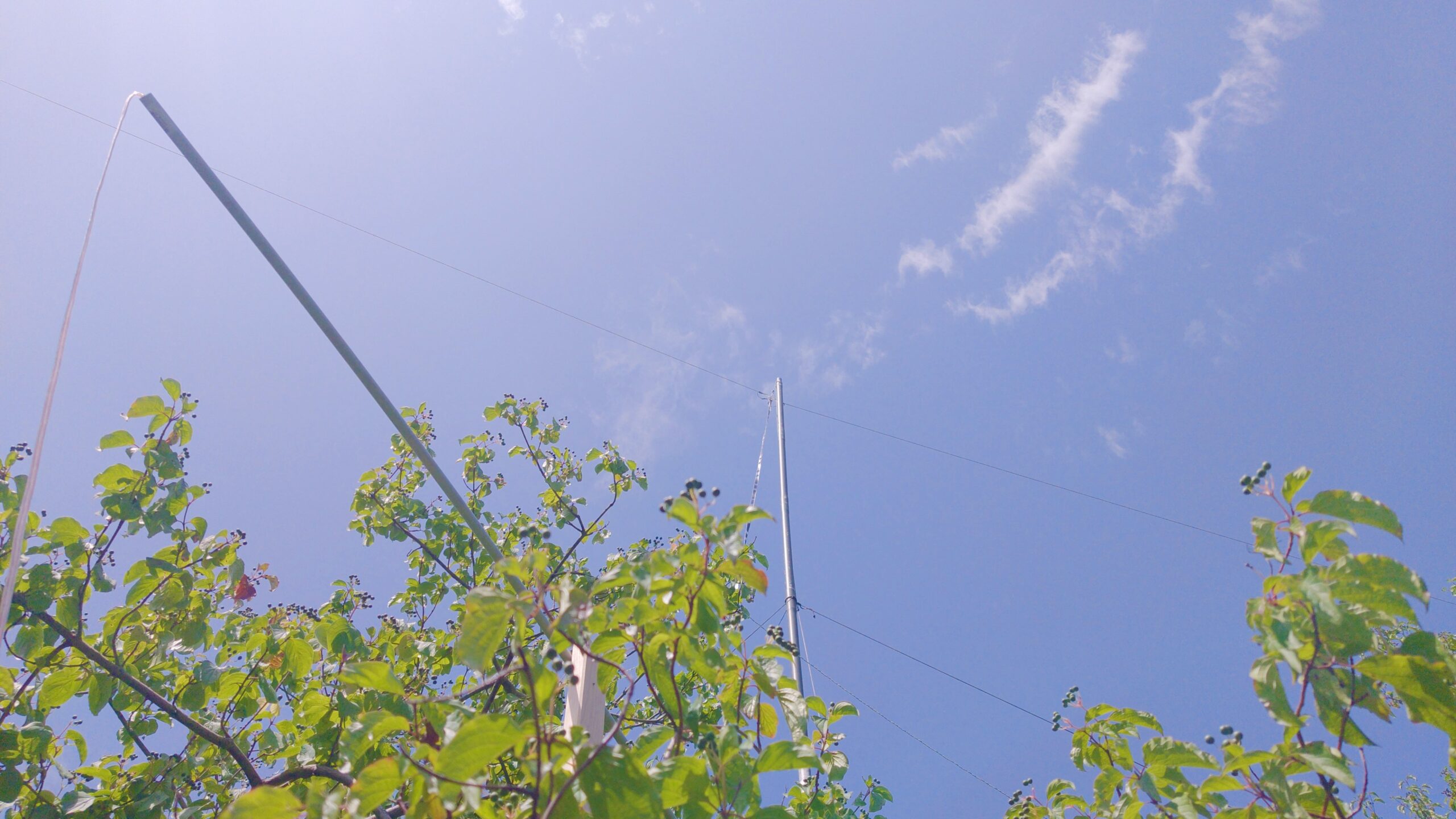The station is not the most fashionable, but has legendary equipment, some of which has a historical background. Such as the Signal Corps BC-348 from a US WWII bomber, or the legendary Collins KWM2A multi-purpose radio and the AEG 800E receiver, both of which were widely used in embassies, humanitarian aid facilities, disaster relief units and other operational areas. Furthermore the following radios and antennas:
Heathkit HW101, Kenwood TS-520, ICOM IC 7100, Kenwood TS 2000 and YAESU FT290R VHF with up-converter for UHF and SHF.
Horizontal dipole (2x20m), vertical multiband end-feed, loop and discone antennas.
For the operation via QO100 satellite transponder I use the ADLAM PLUTO SDR with SG LABS PA and homebrew double patched antenna, mounted on a offset dish 110cm.
All about radio amateur services, history and callsign
According to the International Telecommunication Union (ITU), the amateur radio service, often known as HAMRADIO, is a radio service offered by radio amateurs by those who have the proper authority and are interested in radio technology without financial or political motivations for:
- Mutual interaction
- Experience-sharing
- Technological study.
- Emergency communications
By using the ITU-designated electro-magnetic frequency spectra (bands), this done by combine (modulation) an human unencrypted voice signal, or a computerized sound pattern, or a sound sequence analog signal (digital mode), with a specific electromagnetic wave, radiated from a conductor in resonance with the electromagnetic wave.
The electromagnetic signal’s journey straight traverses the atmosphere or follows layers that have been ionized by the sun. Another way of bridging the gap in distance can be carried out using a ground-based transponder (Relais), amateur radio satellites (ex. SO50), commercial satellites like the QO100 transponder, or space stations, such as the former MIR or actually the International Space Station (ISS) with modified amateur radio equipment (ARISS)
Telegraphie with Morse code was the first dot-and-dash method of information transmission and is called CW mode and still practiced in the present.
History
On November 11, 1886, Heinrich Hertz conducted the first experimental confirmation of the theory-based postulation made by James Clerk Maxwell. On March 20, 1900, Nikola Tesla was granted his first patent for wireless energy transfer, which is generally regarded as the founding document of radio technology. In 1895, Guglielmo Marconi started his tests in Pontecchio, Italy, where he was able to bridge a few kilometers. This was accomplished using a pop radio transmitter and an Alexander Stepanovich Popov replica receiver. Today, these radio technology pioneers are regarded as the first radio amateurs.
Ferdinand Braun, a physicist, was awarded the Nobel Prize in Physics in 1909 for his contributions to telegraphy by radio. He set up the first wireless message transmission in 1898 and shared the prize with Marconi for the first transatlantic radio transmission in 1901. Alexander Meissner’s oscillator circuit led to further modulation, and Reginald Fessenden transmitted the first voice message in 1900. The first radio broadcast was for Christmas in 1906.
Call Sign – C/S
For all governmental and international radio services, as well as for aircraft registration in aviation, Switzerland uses the prefix HB.
The letter H stands for Switzerland’s historical name HELVETIA in the Roman era. The H is also represented in the car countries plate CH what expresses: Confederatio Helvetica.
The second nation to utilize the letter H as a prefix is designated by the letter B. This custom originated from the seafaring in the early 20th century. (The first country with H is Hungary HA).
The license for the unrestricted Radio Amateur Service adds the number 9 after the country prefix. (A 4 would denote the Radio Amateur Service of the Swiss Army; a 3 would denote a novic license).
The state authority assignes the personal or individual suffix TSO. Thus the callsign is unique in the world.
